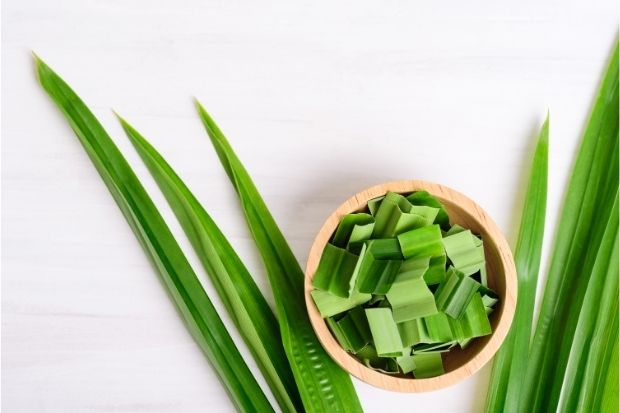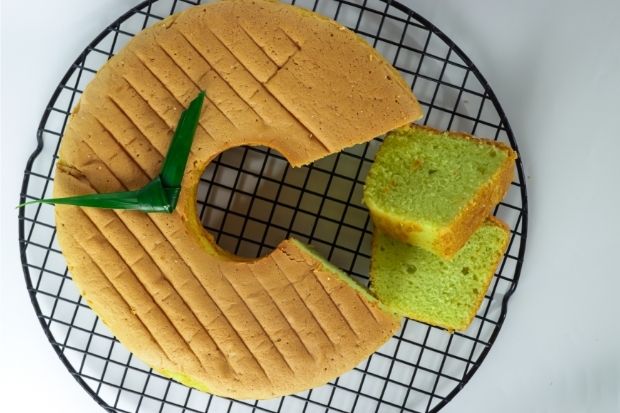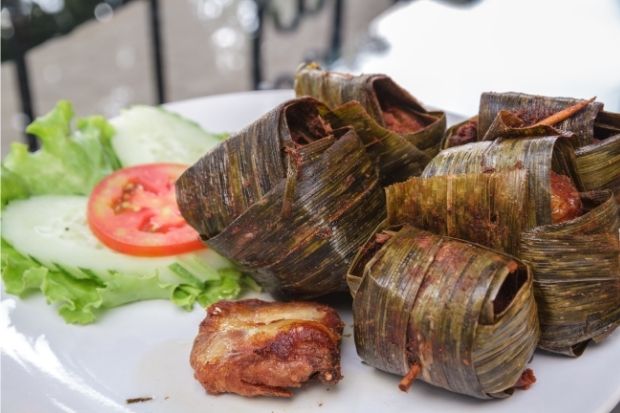If you’re interested in Asian cuisine, you may have used a pandan leaf in some of your dishes. This leaf is 12-20 inches long and is a popular ingredient used to give some dishes certain flavors and aromas. The leaves are inexpensive and easy to use in the kitchen, but they can be hard to find.
You can use other foods as a pandan leaf substitute. Pandan leaves can be replaced with vanilla bean, matcha, or collard greens to get the results you want.
What Is Pandan Leaf?

The pandan leaf is a versatile plant used frequently in Asian cooking, especially in the South and South East Asia areas. Because of its culinary and health advantages, these delicious green leaves are becoming more popular in other parts of the world, including the United States.
Still, the leaves can be a challenge to find when you want to cook with them. Although a perfect substitute doesn’t exist, the foods mentioned above will do. You can also use fresh pandan extract or pandan essence if you like, which you can normally find in Asian supermarkets.
If you choose vanilla bean as an alternative, you can use the pods, paste, or even the extract from the beans themselves, which will give the food a somewhat sweet and floral property.
If you use collard greens, simply boil or chop them just as you would if you used pandan, and use them just as the recipe says. If you choose matcha, remember that it comes in powder form and will add an emerald-green color to your foods as well as caffeine and a slightly astringent flavor.
While these three items are not exact substitutes for pandan, they are very similar and should work in a pinch.
Why Is the Pandan Leaf So Popular?

Pandan is used in lots of Asian dishes and gives food a savory, sweet taste. It is a very unique type of leaf, and its aroma and flavor aren’t easy to replicate. Of the three substitutes mentioned above, the vanilla bean actually comes closest to being a substitute for the pandan leaf.
Pandan, of course, does much more than simply taste and smell good. It is believed to have numerous health benefits, including its ability to:
- lower your blood pressure
- relieve arthritis pain
- freshen your breath
- increase your fiber intake
- help with cold- and flu-like symptoms
- ease constipation problems
- treat boils
Pandan, also called Pandanus, is a plant that consists of spiky, fan-shaped leaves. Some varieties bear red-orange fruits that look similar to pine cones. The plant is also known as a screwpine, and it is usually sold either fresh or frozen in Asian grocery stores or specialty food stores. There are roughly 600 species of pandan, but not all of them are edible. A lot of them can be used in infusions or extracts or even steamed into your rice dishes to give them a better aroma. There is indeed a lot you can do with pandan if you know how to make full use of it.
How To Use Pandan Leaves

The fresh leaves of the pandan plant are usually juiced or boiled, but they can also be used to wrap meats and give them a much better flavor. The fruits can be eaten raw or made into marmalade, and if you pulverize the leaves, the mixture can be used as an extract that is emerald green in color. The more mature the leaves are, the deeper the flavor is and the darker the color.
You can use the leaves in either sweet or savory dishes. People usually describe the pandan flavor as a vanilla flavor with a touch of coconut.
If you make a pandan paste that is roughly 3.5 ounces (99 grams), it provides 0 grams of fat, 2.2 grams of protein, 32% of the RDA (Recommended Dietary Allowance) of iron, and 11% of the RDA of fiber. It is also rich in beta carotene and very low in calories.

This is a very nutritious plant indeed, but it can be rather difficult to find if you’re not in Asia or you don’t live in an area with a large Asian population. This is the main reason why the leaves of the pandan plant are often sold in frozen, powdered, or extract forms, all of which are a little easier to find than fresh pandan leaves.
As far as negative side effects are concerned, keep in mind that pandan leaves can be very sweet, which might concern people with diabetes. While numerous studies have been performed on the plant, they have all been conducted on rats, not humans, so we aren’t sure how it reacts with certain medications. Nevertheless, it does seem to be a very nutritious food that is versatile in the kitchen. Ask your doctor if you’re not sure about the health effects of including pandan in your diet.
